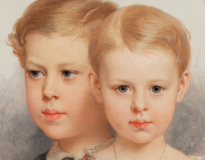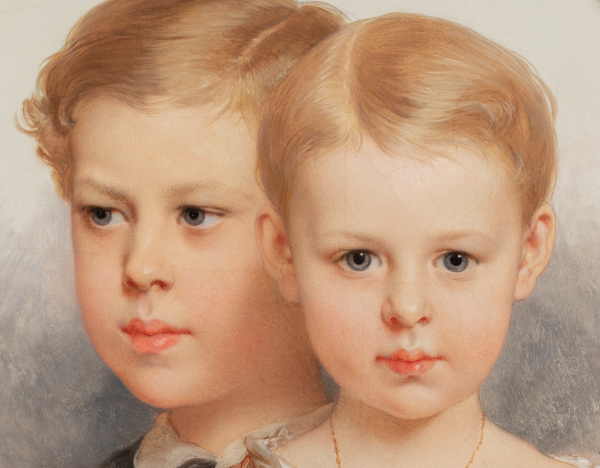Edouard Dubufe
( 1819-1883 )
Biography
The French painter Edouard Dubufe is known for his portraits of high society and his historical and religious scenes. The son of painter Claude-Marie Dubufe and Edmée Duménillet, he grew up in an atmosphere steeped in art and culture. He studied at the École des Beaux-Arts in Paris, where he was taught by Paul Delaroche.
From the outset, Dubufe distinguished himself by his meticulous work and good technique. In 1839, he was awarded a third-class medal, marking the entry of his work into the public domain. His style became more precise and developed, with a keen sense of light and composition. He became a sought-after portraitist.
In 1850, he was commissioned to paint a portrait of Napoleon III and another of Empress Eugénie. He was one of the official portraitists of the Second Empire, along with Franz Xaver Winterhalter. His portraits were admired for their dignity and realism. He was one of the most popular artists of his time, particularly among the nobility and bourgeoisie.
Dubufe also painted historical scenes and religious compositions. Dubufe enjoyed success in France and abroad, particularly in England. There he discovered the great British portrait painters, who influenced his style. In Italy, he became familiar with ancient painting.
He had a series of personal tragedies in his career. He married sculptor Juliette Zimmermann in 1842. She died in 1855, a few months after the birth of their daughter. Dubufe remarried in 1866. Despite the problems, he continued to work well. Dubufe also lost his son René in 1876 and became lonely.
Today, his art is displayed in famous museums and private collections. He is still admired by art lovers and portrait historians.
93400 Saint-Ouen sur Seine

